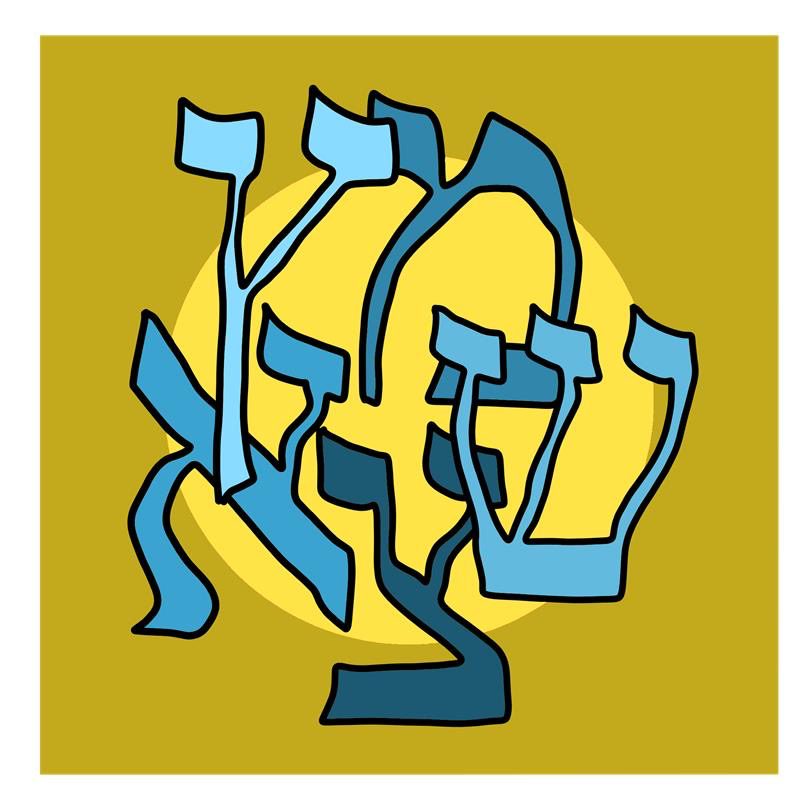Students and faculty celebrate growth of Yiddish at Yale
The University’s inaugural Yiddish program is expanding its offerings this semester and looking to connect students across Yale’s community with Jewish language and culture.

Anasthasia Shilov
Yale’s new Yiddish program helps students fulfill the University’s language requirement while connecting with Jewish culture and Eastern European history.
Previously, Yale offered only one course for Yiddish, “Reading Yiddish,” which was cross-listed with German and Judaic Studies. In 2021, Yale began offering an L1 Yiddish class for language credit, and since then the program has grown exponentially. Now, Yale offers classes up to the third language level, or L3 — Intermediate Yiddish I.
“For less taught language programs, it can be an uphill battle to get a critical mass of students. I’m extremely pleased with the program’s success so far,” Joshua Price, the driving force behind Yale’s Yiddish curriculum and the program’s principal lecturer, told the News.
Price also noted the importance of not reducing the program to mere numbers — although the Yiddish program is small, he noted, students are incredibly committed, with “one person even going to Oxford” to continue their study of the language.
He added that the growth of Yiddish at Yale extends beyond simply the increase in language offerings. Program members noted that they take these courses not only to learn Yiddish, but also to connect with its culture in a myriad of ways.
“This class has become a magnet for Jews that are interested in Jewish renewal and revival,” L3 student Medad Lytton ’25 told the News. “Taking Yiddish allows us to rediscover older layers of Jewish culture that have been lost.”
As a language with an incredibly tumultuous history — due in large part to antisemitic campaigns throughout Europe during Germany’s Nazi rule — students like Ruthie Weinbaum ’25 expressed admiration for the language’s longevity, and that of Jewish culture as a whole.
Lytton explained that Yiddish classes felt more like “a vehicle for the culture” of Judaism than technique-focused language courses.
Price also noted that by weaving Jewish culture into the Yiddish curriculum, he aims to help his students encounter sources in their original state while also learning the fundamentals of the language.
“I am trying to find the right balance between offering introductory language classes, while also featuring the language in translation,” Price said.
By designing an interdisciplinary curriculum, Price also hopes to bring the program “in line with other languages departments at Yale.”
Yale has an extensive Yiddish archive within Sterling Memorial Library and the Beinecke Rare Book and Manuscript Library, which offer many resources that “most other universities don’t even have,” according to Price.
Beyond simply serving as a language and cultural course, students noted that Yiddish also provides a fun and supportive community.
“We see each other every morning and are all friends. In fact, we’re getting dinner tonight,” Isabelle Kim-Sherman ’27 said of her L1 Yiddish course.
Many students taking Yiddish also appreciate the support that the community offers. Throughout the year, many students plan social events together, such as Shabbat meals and breakfast before Rosh Hashanah, the Jewish New Year. Some participate in extracurriculars, such as Shibboleth — an undergraduate journal dedicated to Jewish thought and ideas.
Students also expressed hope that the program would continue to expand and receive funding and support from the University. Currently, many noted, Price handles much of the program’s upkeep alone.
Giovanna Truong ’23, the program alumna who is currently studying Yiddish at Oxford and is a previous writer and illustrator for the News, explained that the program has stuck with her postgrad.
“Yiddish never leaves your life,” Truong said.
Yiddish is a West Germanic language historically spoken by Ashkenazi Jews.







